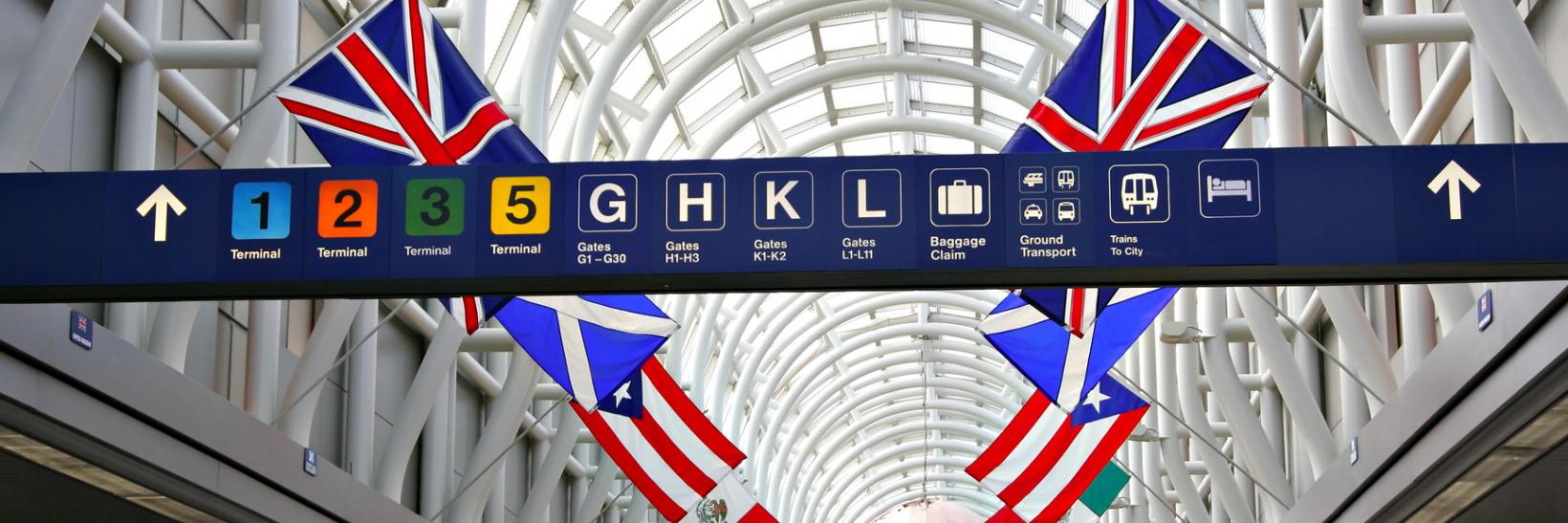
Here to Help: International Students & CBP
Entering the United States may seem complicated. However, if you know what to expect, it can be a smooth and efficient process. U.S. Customs and Border Protection (CBP), an agency within the U.S. Department of Homeland Security, controls the flow of goods and people into the United States to prevent terrorists and high-risk and improperly documented travelers and goods from entering the United States while facilitating the entry of legitimate travelers and trade into the United States. CBP’s work focuses at the borders of the United States, including airports, land borders and seaports.
When an official at a U.S. Embassy or Consulate issues you a visa prior to your travel to the United States, there is no guarantee that CBP will admit you into the United States. The visa is permission for you to apply to enter the United States at a port of entry. A CBP officer will then use the inspection and examination to determine whether you can enter the United States when you arrive.
CBP must examine anyone, including F and M students, who arrive from outside the United States and want to enter the United States. If you are arriving by air, you will receive two CBP forms on the airplane for you to complete prior to arrival: the Form I-94, “Arrival-Departure Record,” and the Form 6059, “Customs Declaration.”
The first person you will meet when arriving by air is a CBP officer at a primary inspection booth. This CBP officer will conduct a primary inspection. To assist the CBP officer in conducting this primary inspection, please present all your documents and forms, including your passport, visa, Form I-20, any otherproof of admission to your school that you have and any other documentation necessary to establish your admissibility as an F or M student in the United States. The CBP officer will ask you questions to determine several pieces of information:
- The purpose of your visit to the United States
- How long you plan to visit
- Where you will be staying
- If you have the means to support yourself financially in the United States
- If the documents you are presenting are compatible with the purpose and intent of your visit
CBP officers also will examine your luggage and personal effects to determine if you have any prohibited or restricted items.
If you are arriving at a land border crossing, you will report to a primary inspection booth where a CBP officer will inspect you. The CBP officer may request that you report to the inspection office inside of the port of entry where another CBP officer will examine your documents and forms to complete your inspection. You must have the same documents when entering at a land border crossing as if you enter at an airport. Also, expect that a CBP officer will ask you the same types of questions at either type of port of entry. A CBP officer will give you a Form I-94 and Form 6059B in the inspection office.
If CBP cannot complete your inspection at the primary inspection booth, the CBP officer will refer you for a secondary inspection. The secondary inspection is a more detailed examination of your admissibility and your personal effects.
Once the CBP officer determines you can enter the United States as an F or M student, the office will register you in US VISIT and stamp your passport and Form I-94. You are now allowed to enter the United States. If you entered the United States form a land border port of entry, there is a $6.00 processing fee for the Form I-94.
If you have any question regarding the CBP inspection process, you may ask to talk to a supervisory officer at any time during processing. You may also ask to talk to a CBP passenger service manager.
CBP is here to help facilitate your entry into the United States. Being prepared and knowing what you can expect will help ensure that your entry into the United States goes smoothly. To learn more, see the links below.
Resources

